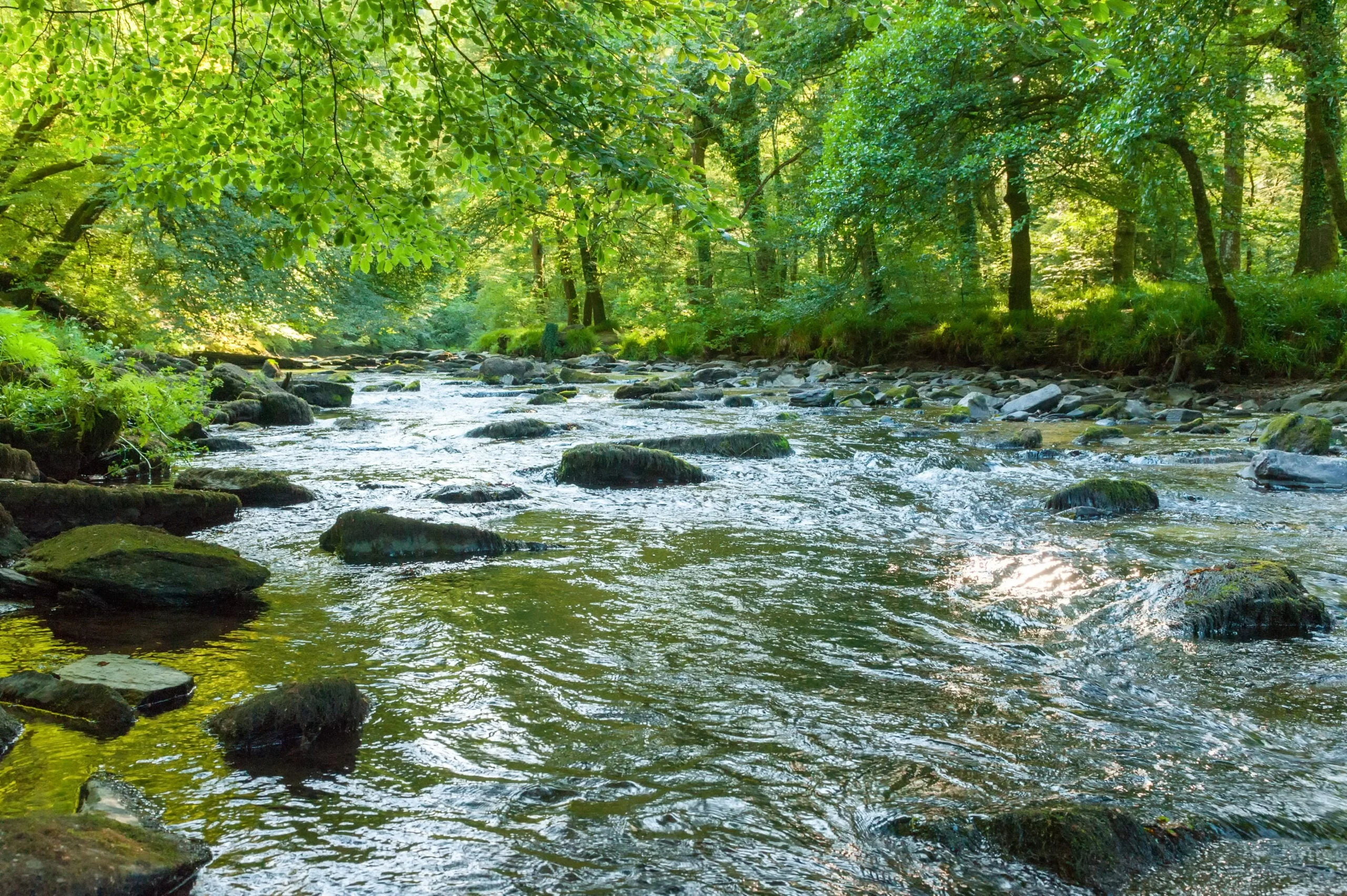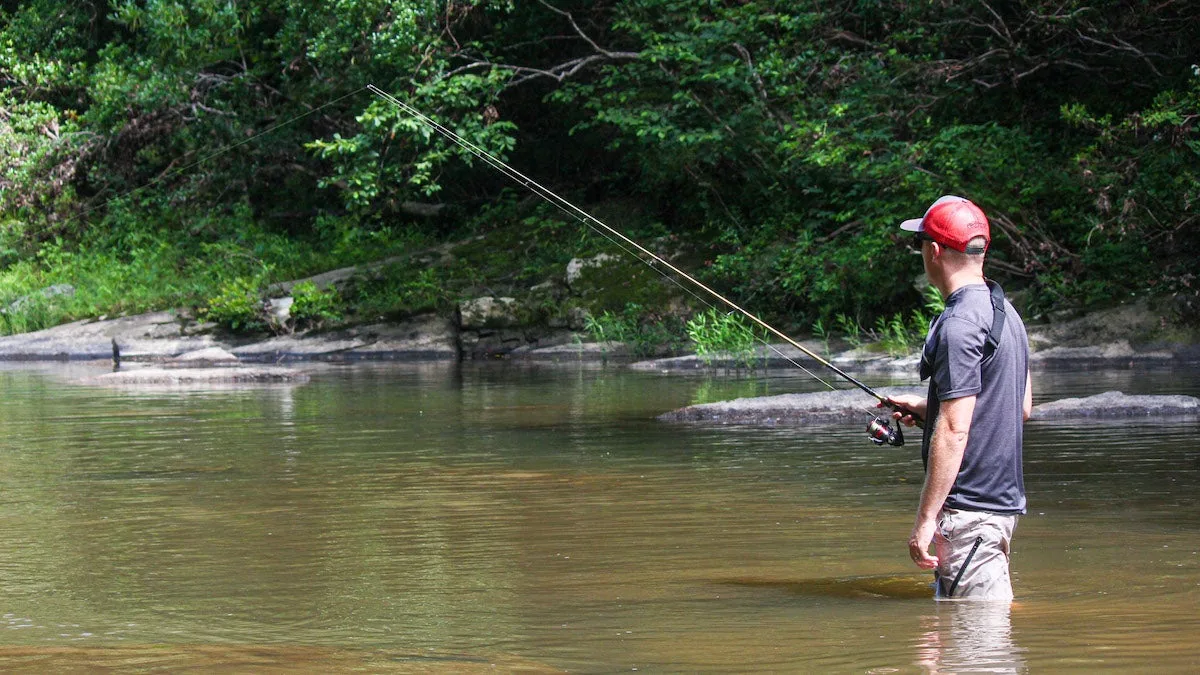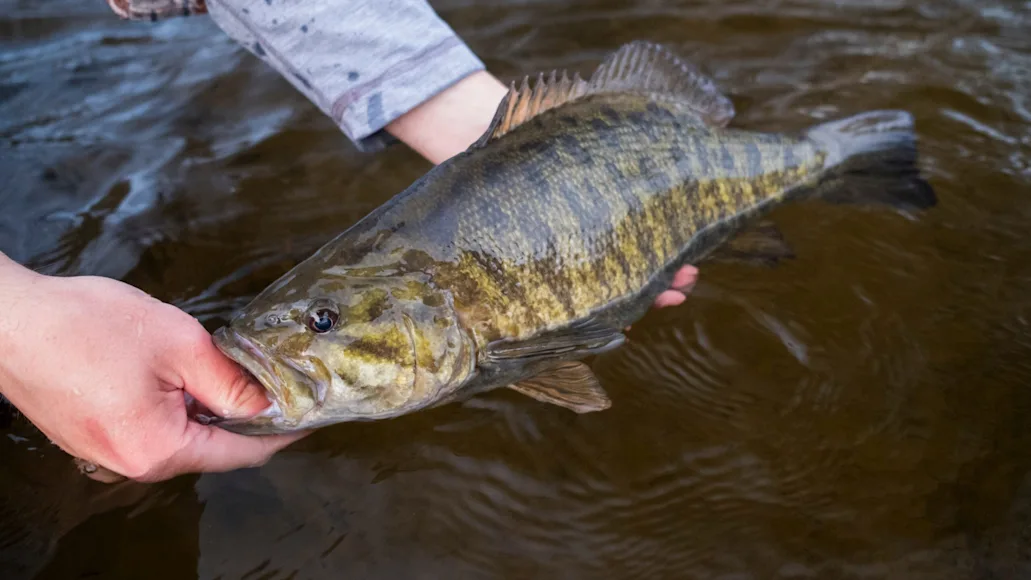Current is key when targeting bass during the summer
. Moving water is cooler and more oxygenated than still water, and fish often congregate in these spots when water temperatures rise. This can be anything from ledges and dams to stream riffles and storm drainages. Moving water will attract fish and serve as a highway delivering food right to their mouths.
During the dog days of summer, areas with current can produce big bites from both smallmouth and largemouth bass
. Fish will often group up around current, making it easier to locate and properly target them. Once you find fish, you can use the intel to help develop a pattern based on water temperature, flows, and time of year. Then, you can apply that info to other fisheries with similar characteristics.
Below is a quick guide to fishing every type of current you’ll find bass in. Plus, some lure suggestions and fishing tactics for each scenario. Use these tips to locate and land big bronzebacks and bucketmouths this summer.

Cold water streams are great places to target summer smallmouth. bravajulia/Adobe Stock
Creeks, Rivers, and Streams
If you don’t have a power boat, don’t sweat it. You likely still have access to great summer bass fishing. Here in Alabama, where I live, and across much of the U.S., there are numerous creeks, streams, and rivers filled with bass. Depending on the size of the river and access laws, you can potentially fish streams from a kayak, shore, or even wade it. Just be sure to check your local regulations before walking in the water.
Creeks, streams, and rivers are cooler than lake water in the summer because the surface is always mixing with the water underneath. The water is also constantly being aerated as it rolls and bubbles over the shoals. This cooler, more oxygenated water leads to healthier, more active fish.
When fishing, focus your efforts on areas likely to hold bass, such as wooded shorelines, submerged vegetation, shoals, and riffles. Smallmouth will often move into shallow riffles looking for crawfish and small baitfish. Structure right next to current, like a big boulder, is also excellent habitat for river bass waiting for food to come by.
As for baits, rooster tails
and beetle spins
are some of the best for this style of fishing. Bass will also eat small topwaters
, and jigs as well. Focus your efforts on the shoals and stronger areas of concentrated current, as fish will group up in these spots, awaiting passing prey. But don’t ignore shade, undercut banks, and submerged structure—these are all great areas to produce strikes as well.
Tributaries and Outflows
If you’re fishing a bigger body of water, either from a boat or from the bank, it’s a good idea to look for tributaries. A tributary is where a river or stream flows into a larger river or lake. Bass and other fish species will often congregate at the mouth of tributaries. Here, fish have access to cooler, oxygenated water and potentially an easy meal.
On a smaller scale, outflows like storm drainage systems will attract fish for the same reasons: cooler water and higher oxygen levels. These areas typically attract everything in the food chain, from small minnows to panfish to bass and even larger predators. Figure out a couple of baits that closely match the forage in the fishery, and then cast them past where the current dumps in and reel them through. Spinnerbaits
, squarebills, lipless crankbaits
, swimbaits, and chatterbaits
are all great options.
Before you leave, though, be sure to pick the spot clean with a bottom-dwelling bait. Slowly crawling a shakyhead, swing head, or jig below the current will often catch fish that weren’t positioned higher up in the water column.

Small creeks are home to both smallmouth and largemouth bass. Shaye Baker
Ledges
In the summer, current is imperative when fishing ledges on river-fed reservoirs. Lakes along river systems like the Tennessee River hold monster bass. Lake Guntersville, Wheeler Lake, Kentucky Lake, Pickwick, and Chickamauga are historic fisheries known for their ledge fishing. But without current, the fish in these lakes often suspend and scatter, making them very hard to catch in the summer.
When the current is rolling, however, the fish sink back down to the bottom and tuck in close. They either hang right on the bottom so that the water can flow over them without washing them away, or they’ll tuck in behind boulders, stumps, brush, and other obstructions. These objects create little areas of slack water that the fish can sit in without having to swim as hard to stay put.
From these vantage points, bass can wait for a meal to wash right to them. You can take advantage of the situation by inserting your bait into the mix. Every fishery is a little different, but these are my top ledge fishing baits: flutter spoon, Texas rig
, deep diving crankbait, hair jig, and football jig.
Dams
If a bass fishery has a dam at the upper end of it, you can bet there are fish sitting right below it. This is true year-round, but an especially helpful fact to take advantage of in the summer. These dams often have turbines that are controlled by some governing authority. You can determine the release schedule for the specific dam through the authority’s website or app. When water is released, and the current is moving, you want to be fishing it.
Even if the dam is smaller and not used for hydroelectric power generation, there’s still some sort of inflow coming through pipes or over a spillway. Whatever the case, bass and bait congregate in these inflows. Bass will position behind any obstruction they can find, be that bridge pilings, boulders, points, or other cover. Use the same spinnerbaits, swimbaits, topwaters, and other lures we’ve already mentioned to target these fish.
You’ll also find bass grouping up along current seams under dams. Look for areas where the swift water meets the slack water. Bass will roam up and down these seam lines, staying just out of the swifter water, as they patrol the slack water in search of food that gets slung out of the current and into the still water. These baitfish are usually disoriented and offer easy pickings for the well-positioned bass.
In all situations, it’s a good idea to wear a PFD (personal floatation device) when fishing serious deep current. In many cases, state agencies require you to wear a life jacket when fishing within a certain distance of a dam.
Find Current to Find Summer Bass
Unless you have a boat to reach deeper water, summer bass fishing can be very difficult. Shallow, shaded areas can occasionally produce bites, but even those can become too hot for fish. Anglers from shore and small boats should target cool, moving water during hot weather. Fish stack up in current for colder, oxygenated water and the chance to munch on bait being flushed into their face. Target areas like streams, creeks, ledges, and dams during the hottest days of summer, and you’ll find bass willing to eat.


